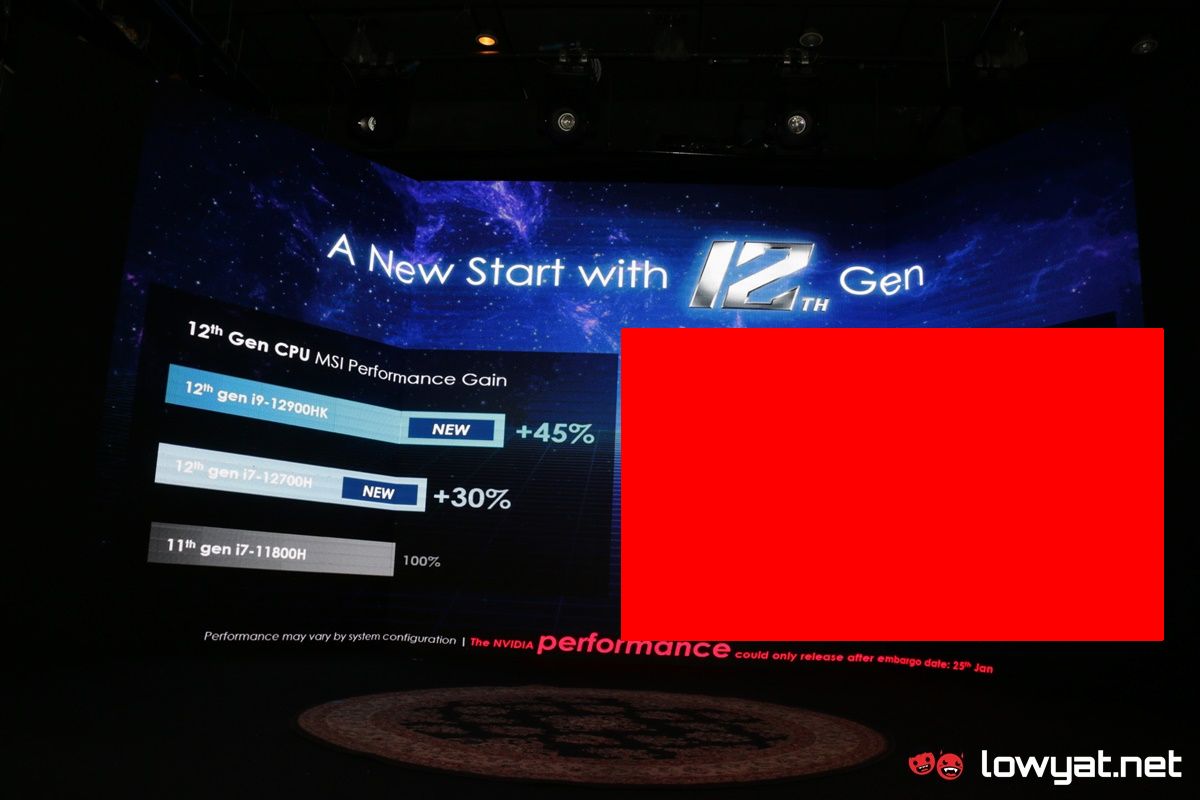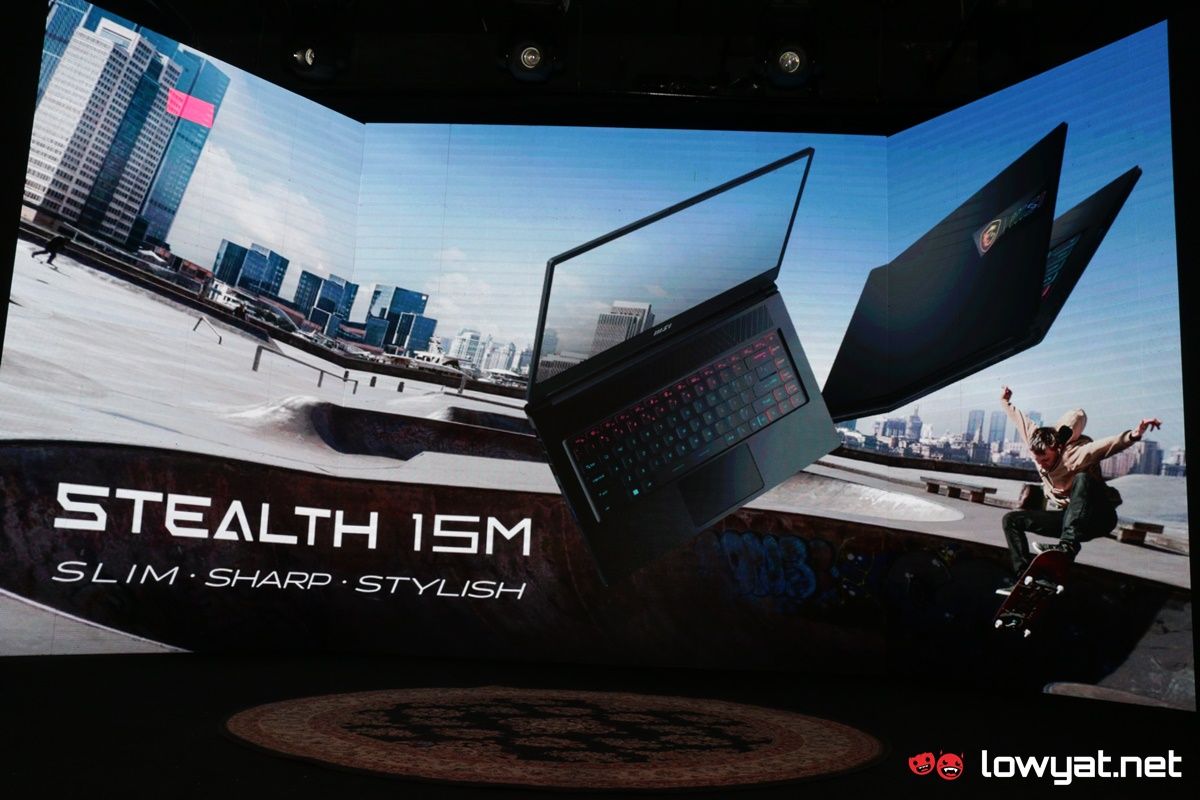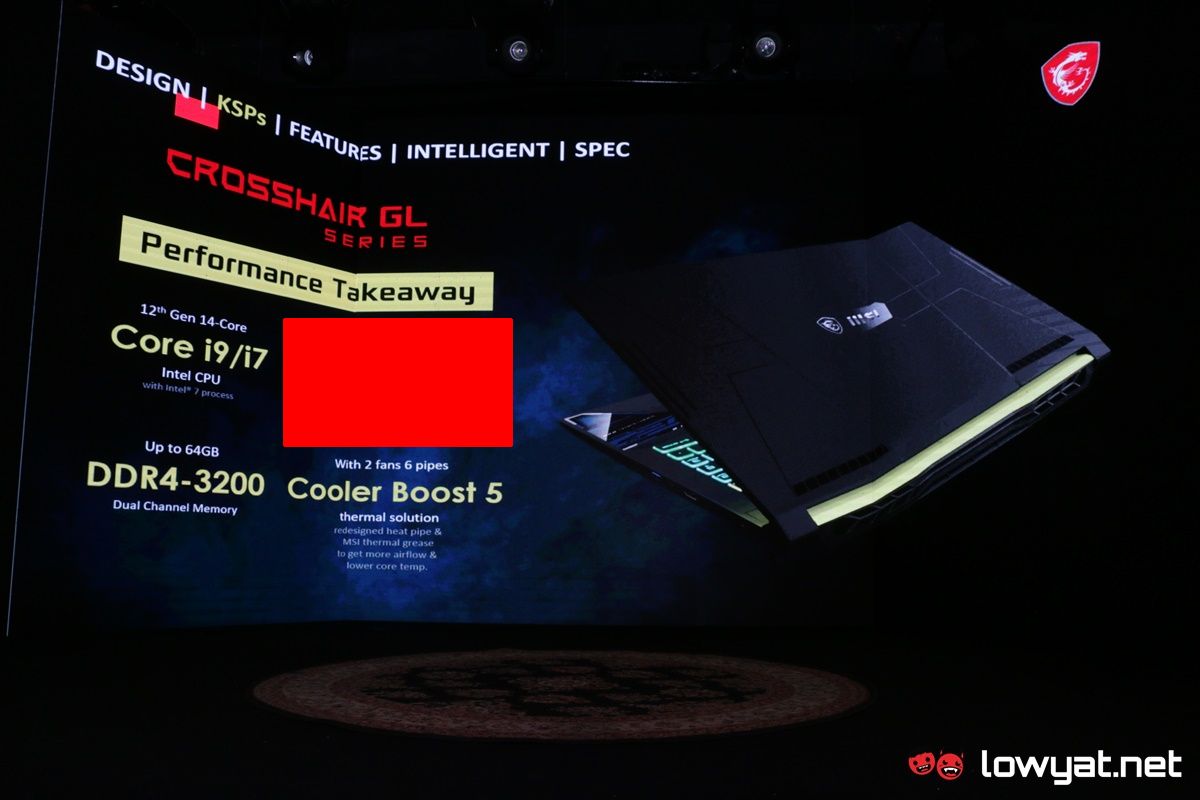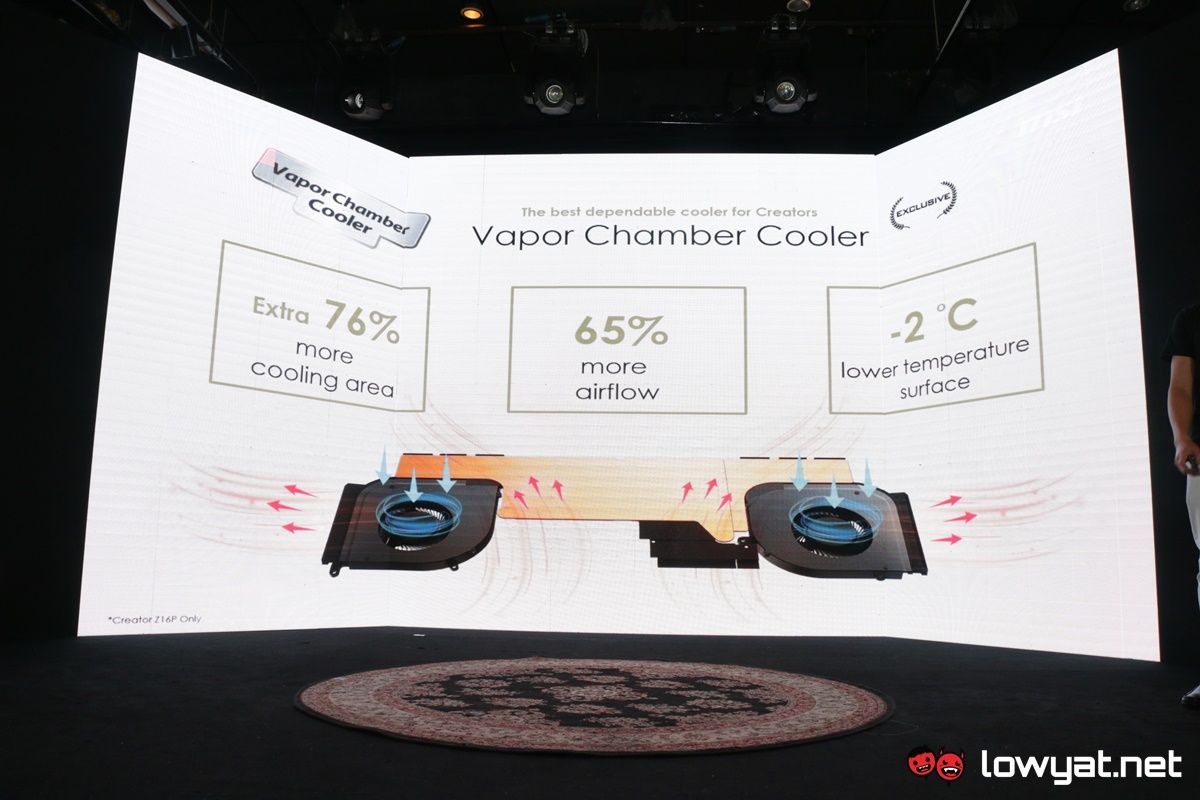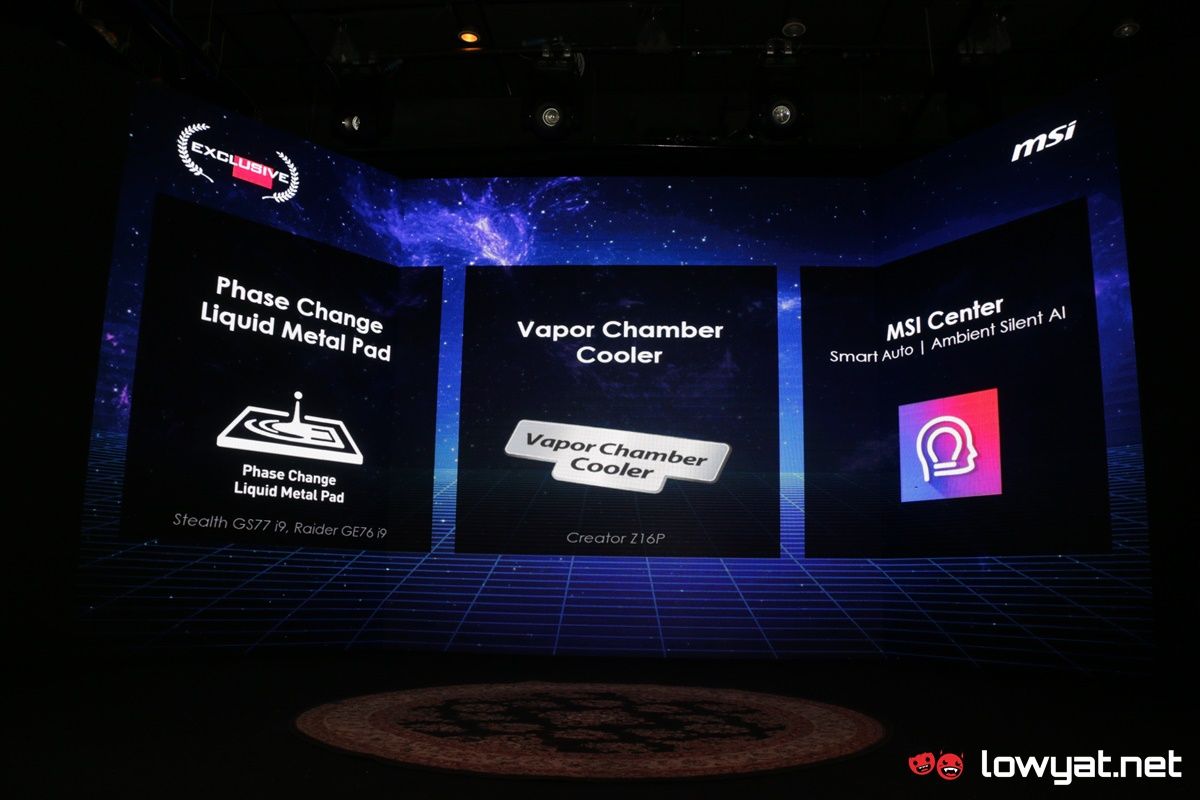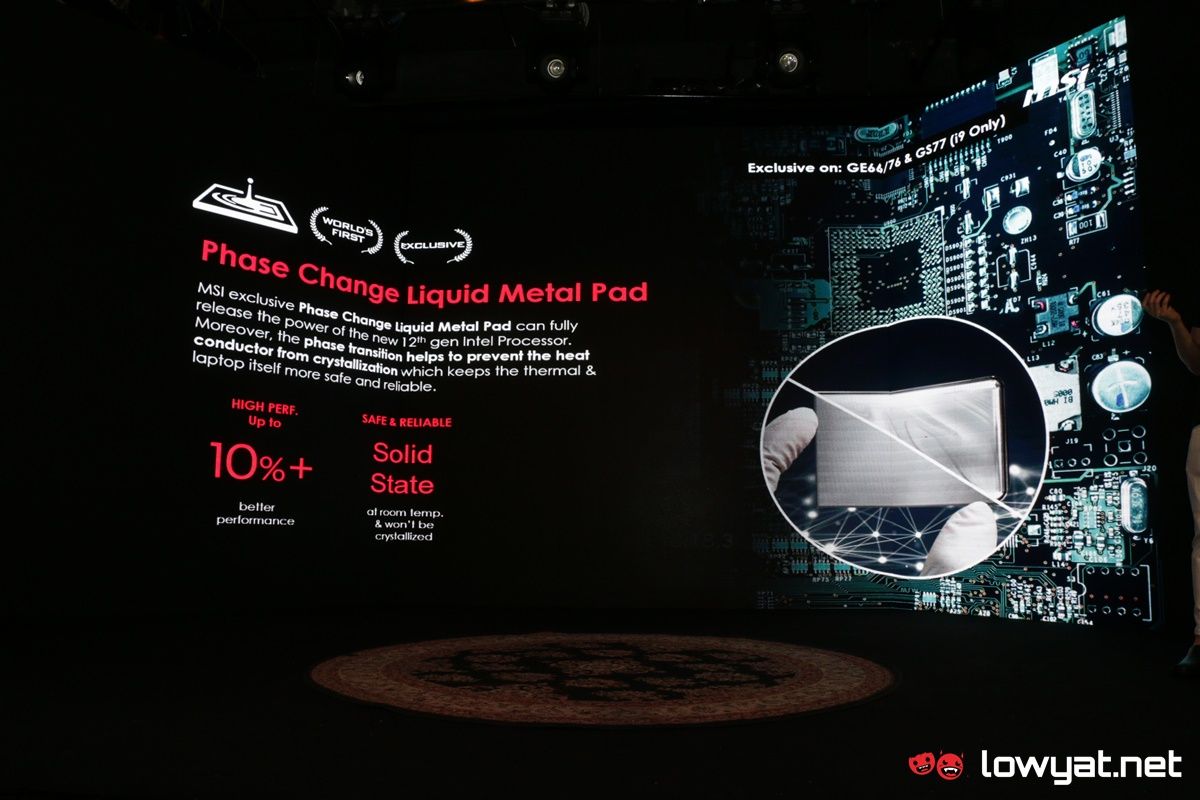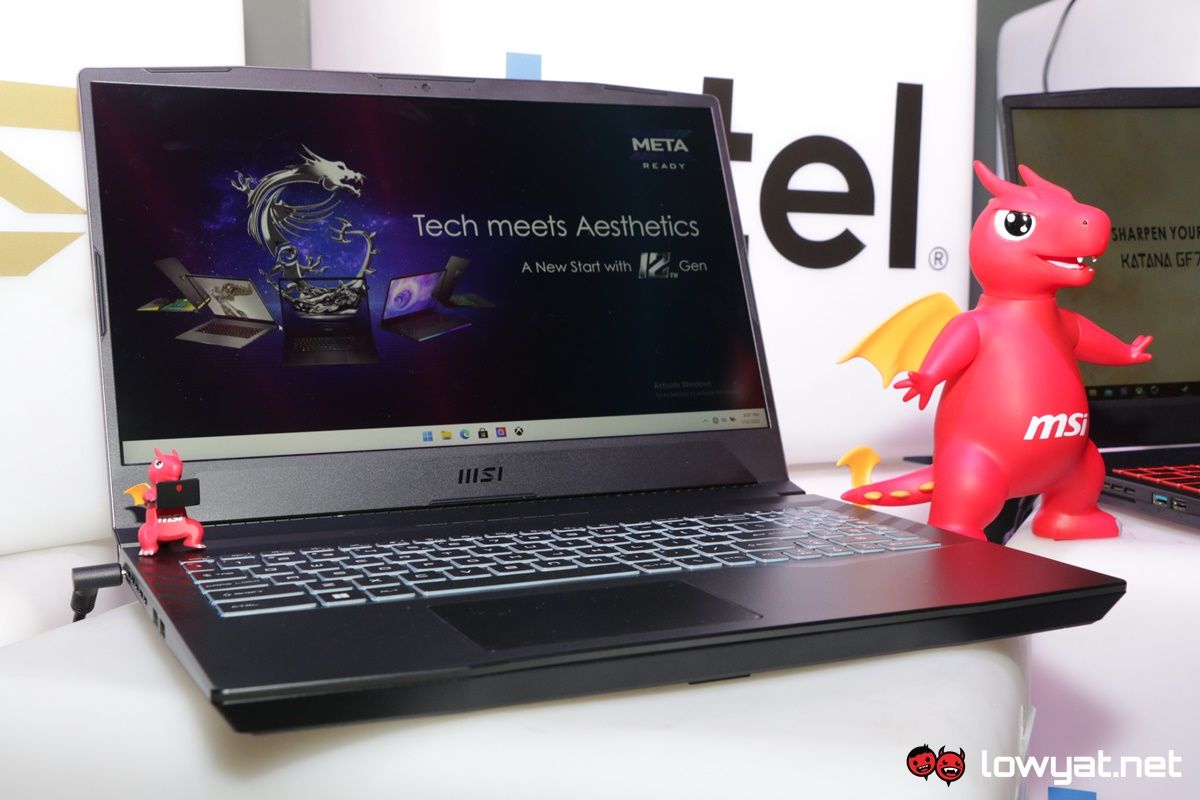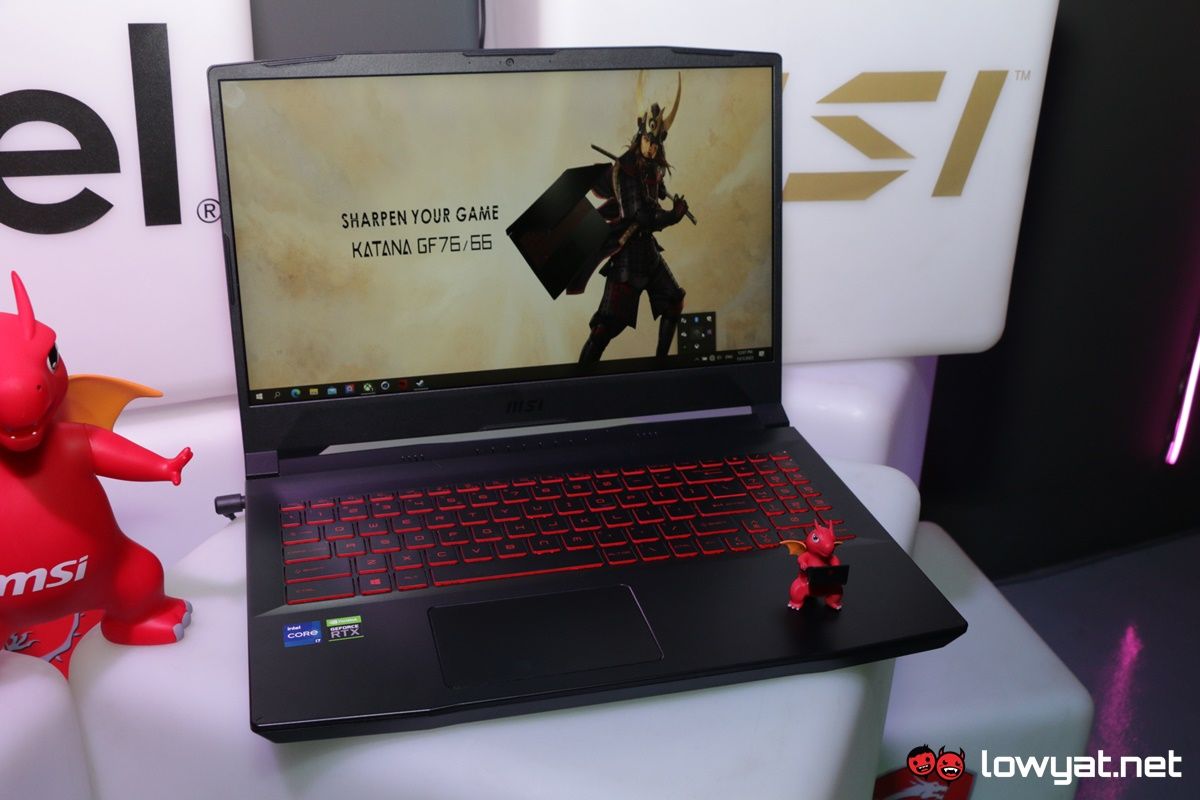As many of you know, the latest MSI gaming and creative laptops are expected to ship out from February onwards, with all of them running on Intel’s latest 12th generation Alder Lake mobile CPUs for laptops, as well as NVIDIA’s GeForce RTX 30 Series. Like its desktop counterparts, the new CPU is based on the Intel 7 process, which is just a fancy name for the 10nm Enhanced SuperFIN die lithography. Additionally, each CPU is governed by a series of performance-based Golden Cove cores (P-Cores) and power-efficient Gracemont cores (E-Cores), all kept running through Intel Thread Director. Of course, this also means access to the latest DDR5 memory standard, but it is worth noting that some laptops may still maintain the use of DDR4 RAM on a model-to-model basis.
In regards to the latter, we are unfortunately unable to say what sort of discrete graphics some of these laptops are using, hence the red boxes in some of the images, blocking out the GPU model. Having said that, if you’ve been following the leaks and rumours online of late, you’re more or less in the know as to which models these unnamed NVIDIA laptop GPUs are. For that matter, the MSI laptop series are seemingly unchanged; you’ve got the GS Stealth series, which are ultra-powerful gaming laptops that also place a focus on a thin and light form factor. Moving down the line, there’s also the GE Raider series that is essentially aimed at being desktop replacements for gamers that aren’t very concerned about the weight.
One particular series that MSI touched upon too was its Crosshair GL series, which also happens to be available in a special Extract laptop edition, made in collaboration with French video game studio Ubisoft to promote its latest FPS title, Rainbow Six Extraction.
MSI also had some proprietary technology to boast about, chief among which is its new Phase Change Liquid Metal Pad that it uses in the GS77 Stealth and GE66 and GE76 Raider laptops (Core i9 12900H models only). It’s clever piece of heat dissipation design, if we’re frank, and seemingly more efficient than using the standard liquid metal solution. Technically speaking, the Liquid Metal Pad remain in a solid-state between the heatsink and CPU and GPU. Once the temperature goes beyond 58°C, the pad then liquifies and covers the entire die, allowing for better thermal conductivity and, as a result, an increase in performance.
At the time of writing, MSI did not specify when exactly each laptop model will be hitting local shelves, save that it should be sometime in late January or an unspecified date in February. For that matter, we’re quite eager to test out some of the units that they have to offer, once the brand has some units available for us reviewers, naturally.


